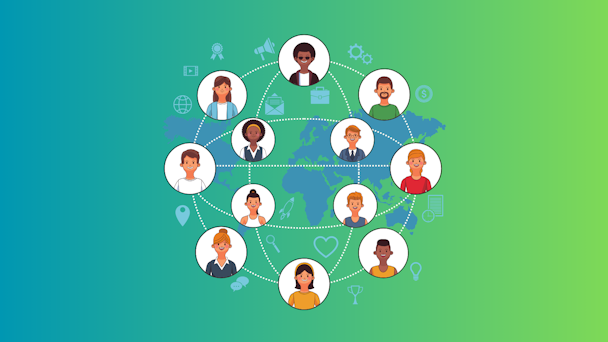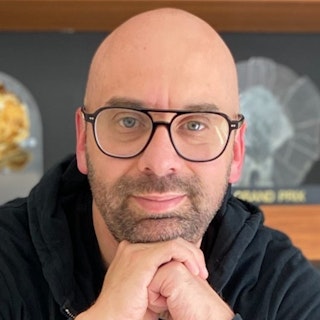Forget lone heroes with magic wands. DE&I must be a collective endeavor
Many businesses have embraced diversity initiatives over the last few years, but some efforts have stalled. DDB Latina’s Juan Isaza believes it’s a mistake to place the burden of change on the shoulders of a single individual - it’s time to pluralize diversity.

It may seem obvious, but it isn’t. Diversity is about incorporating varied profiles and perspectives. Inclusion is about ensuring talents have access to groups and teams that facilitate their growth. Diversity and inclusion compel us to think collectively, inviting addition, multiplication, and collaboration.
For many multinational companies, the issue is assigned to a single person. According to global headhunter Korn Ferry, the tenure of a diversity-focused executive has shortened partly because they become “lone heroes” who fail to transform an organization’s culture. As many have pointed out, appointing a single DE&I head does not instantly diversify an inherently non-diverse company.
What if, instead of one diversity leader, we built a diversity network?
Advertisement
Creative industries like advertising, among many others, have evolved their perspectives on diversity in recent years. They’ve recognized the value of broad population representation and understand that diversity means more than just doing the right thing – it enhances the quality of creative outputs and workplace environments. It has to be a conviction that diversity is a prerequisite for creativity, ensuring that generated ideas resonate across diverse groups and audiences. This hasn’t just happened because diversity executives entered our organizations; it’s primarily because we’ve daily seen the value generated when local offices integrate diverse talents profiles that previously had no room to grow or even get a job.
In a Harvard Business Review piece, Mita Mallick acknowledged, “A new CDO cannot come in, wave a magic wand, and transform an organization into an anti-racist one overnight.” It requires a team and resources, especially in a global organization. Believing that someone based in London, Tokyo, or New York can oversee a global company’s diversity seems impractical. Such a role might showcase a commitment to diversity but may not genuinely establish a DE&I culture worldwide. Instead, a networked approach where global offices share successes and influence global decisions seems more apt.
Rohini Anand, Sodexo’s former global chief diversity officer, highlights in her book on DE&I global leadership the challenges of implementing programs and initiatives in all multinational company offices due to political, legal, and cultural differences. In many countries, pursuing diverse and inclusive environments is perceived as a trend, often driven by events in specific countries (eg, US based on #metoo or #blacklivesmatter). But what if we reverse this thinking and, rather than imposing global policies, learn from what individual countries are doing and how they integrate diverse talents to generate some of the world’s best creative ideas from varied backgrounds?
Advertisement
Take Brazil, for instance, the country with the world’s largest Afro-descendant population (over 55%); an agency like DM9/DDB, which, through its DE&I committee, has successfully fostered the growth of leaders from underrepresented racial groups. Similarly, Africa/DDB in Brazil initiated the “Escola Africa” program in 2021, where Afro-descendant novices build portfolios over 20 weeks before being hired by various Brazilian agencies.
Recently, Omnicom University wrote a paper on DE&I initiatives at DDB Mudra, one of India’s most reputed advertising agencies. Under DDB Mudra’s leadership, we can learn about the increased inclusion of women in executive spaces. We also gain insights into their initiatives to focus attention on creating opportunities for Muslim women in corporate life (notably relevant due to political tensions with Islam in India) or the inclusion through safe spaces of their LGBTQ+ talents, given homosexuality was legalized as late as 2018 in India.
True and genuine incorporation of a vision of diversity and inclusion requires creating a global ecosystem rooted in the very culture of the organization. It must draw nourishment from network executives, but mainly from employees and clients. DDB Mexico is a shining example within the DDB network, having been recognized for two consecutive years as the office with the highest global employee engagement. Over 95% of its employees report feeling “comfortable being myself at work,” a true reflection of one of DDB’s Four Freedoms, the Freedom to Be (along with the Freedom from Fear, Freedom from Chaos, and the Freedom to Fail). This cultural transformation, coupled with DDB Mexico’s client support, has led to more inclusive creative products, crafting ideas for the financial inclusion of underprivileged women or counteracting “rainbow washing.” These ideas have won major awards at creative festivals.
Suggested newsletters for you
Diversity should be a group effort, not an individual one. Millennials and Centennial generations, forming the majority of departments in strategy, creativity, or client service, understand this. They find it more credible when their agencies form diversity committees with representatives from all areas rather than just appointing one executive to oversee diversity, equity, and inclusion. A committee that oversees and drives tangible actions lends authenticity. Various studies, like Glassdoor’s 2021 report, showed that 78% of employees believe a diverse workforce is essential when considering companies and job offers.
Embracing and connecting diversity across geographies, ensuring it’s tangible and believable, offers creative networks a constantly refreshing perspective on diversity. From the US, we learn the significance of integrating Hispanic talent, not only because of its rising purchasing power and demographic representation but also due to its influential lifestyle and cultural impact on the contemporary definition of America as a society. And our office, AlmaDDB, has a lot of lessons that could be a learning curve for some other countries in the network in terms of integrating new demographics.
Similarly, from Latin American offices, we learn that diversity also entails integrating individuals from less developed regions of the country. Most agencies are predominantly staffed with people from major metropolitan areas. If advertising targets the entire country, it should integrate individuals from all regions. Another perspective on diversity comes from some developed countries, highlighting the importance of integrating older individuals, considering they comprise an increasing population and spending power. Additionally, we can gain insights into unconscious biases when hiring individuals with disabilities from offices that have already adopted such measures. We can also learn from offices where transgender individuals have experienced their transitions with respect, empathy, and humanity.
How wonderful would it be if, when asked about the leaders of inclusion and diversity in every company, to have presented a vast list of nationalities, initiatives, and profiles? It’s improbable for a single head or centralized group to holistically view diversity. Hence, DE&I is a networking exercise. Diversity must be pluralized, not singularized.
Creative companies with a presence on all five continents possess the inherent advantage of having diverse viewpoints within their network, enriching their collective intelligence. The key is to listen, create spaces for learning, ensure inclusion isn't led only by executives but by everyone, and let it impact all practices to enrich the corporate culture. Let creativity be inspired and enlightened across all areas, geographies, religions, races, sexual orientations, and abilities. Let’s pluralize diversity.

